"Young Neil: The Sugar Mountain Years" by Sharry Wilson

Young Neil: The Sugar Mountain Years
Young Neil: The Sugar Mountain Years
Review by Broken Arrow Editor Scott Sandie
I was delighted to receive an Advance Readers Copy of Sharry’s book from the publishers. I read it through quickly the first time, then went back and read most of it again. I knew a lot of this material already of course, both from the 80 pages of ‘A Shakey Education’ that I edited in 2010 for the magazine, and also the other Neil books already in existence. But there’s a large amount of detail in here and a big chunk of it is from new research. At 450+ pages, 600+ footnotes, and over 130 photos, it's a very impressive achievement; an exhaustive look at Neil’s school years, tied in neatly to his musical development. It’s described on the jacket as a ‘detailed chronological narrative of Neil Young’s early life’, and that’s exactly what it is. It leaves almost no stone unturned and is surely the definitive study of Neil Young’s early life. In some cases I have to say the detail is mind-boggling. It’s also comprehensively and vividly illustrated, with many never-before-seen photos.

Backstage at the Flamingo Club in Fort William, April 1965.
From left: Neil, Bob Clark, Ken Koblun.
Courtesy of Ken Koblun. Copyright Don Baxter.
The book is organised into three logical parts; Part One: Born In Ontario, Part Two: Winnipeg…Field Of Opportunity, Part Three: Leaving Sugar Mountain.
The opening part covers the years 1945 to 1960, and takes us in four chapters from Neil’s birth in Ontario, through Omemee to Pickering, and back to Toronto, before the move out to Winnipeg in 1960. Part Two is set wholly in Winnipeg, covering Neil’s time at Earl Grey Junior High and Kelvin High School up until he quit high school age 18 in 1964. Part Three sees Neil setting out for a life on the road as a full-time musician.
Sharry’s research consisted of two major strands; interviewing many of the people who were there at the time and were willing to go on the record about it, and exhaustive research of the Scott Young Fonds, which are held at Trent University.
In a long list of people interviewed by Sharry were many of Neil’s old classmates, friends, and of course former band members. Sharry was dogged in tracking them down and many had interesting anecdotes to tell from these early years with Neil. One or two went beyond the call of duty in offering assistance, with Ken Koblun at the top of the list.
What’s a ‘fonds’? It means ‘an aggregation of documents that originate from the same source’. A fonds is different to a collection because of its organic nature. It’s a series of archival documents that have been naturally accumulated by an individual, often through day-to-day activities. The Scott Young Fonds is a very substantial collection of material (documents, paperwork, correspondence, photographs, books, memorabilia etc) gathered from his long life and were a rich source of research material. Sharry and I were fortunate to first visit the Archives at Trent University for two days back in 2009 – there will be more on this in an article in a future issue – and we were both staggered by the quantity of boxes and the quality of what they held. Scott Young was an organised and methodical man with his paperwork; he had a good filing system and to his eternal credit he seemed to have kept almost everything. You name it, it’s here and it’s availability seems like a miracle...
In the years after 2009 Sharry was granted full access to all the archival material, returned many times, and has made very good use of her findings. A surprising amount of it pertains to Neil, especially from his earliest days. The private correspondence (much of it between Scott and Rassy Young, Neil’s schools etc) is very detailed and a lot mentions or relates to Neil’s music. The photos are wide ranging, often typical family ‘snaps’ that take on new importance with the Neil Young connection. The memorabilia was a real surprise, totally unexpected. Some of it was handmade by Neil and is priceless, in all ways. In order not to spoil the book I don’t want to give too much away, you’ll enjoy discovering it yourselves. But here’s one example. Some of you might recall the famous old story of Neil and his chickens, which is told here in expanded detail. Part of the tale is that on one occasion a fox got in and killed Neil’s chickens, so to remind him to close things up each night his dad made a sign saying, ‘LOCK UP CHICKENS’. With Neil’s famous sense of humour, at some point he wrote under it, “Neil is a good boy”, presumably one night when he remembered to lock them up! And there, in box 26 of the Scott Young Fonds (amongst a whole raft of stunning material), carefully kept by Neil’s dad since 1957, is this sign, yellow with age but perfectly legible. There were moments during our first visit to Trent when words weren’t necessary, we simply looked at each other with stunned expressions as the depth and richness of the boxes’ content became clear; this was one such moment.

Taken behind the 4-D in Fort William, June 1965.
Clockwise from left: Terry Erickson, Bob Clark, Ken Koblun, Neil.
Courtesy of Ken Koblun. Copyright Don Baxter.
The narrative tells the story of Neil’s upbringing and schooling in tandem with his musical development. Central to part one is the gradual breakdown of his parent’s marriage, which led directly to his move to Winnipeg with his mother. The itinerant nature of Neil’s early years is clear, with the family making several moves before he was 12, some caused by Scott Young’s work, some by problems in the Young’s marriage, and a couple of winter stays in Florida to help with Neil’s recovery from polio. We learn of Neil’s growing interest in music – especially the fledgling sound of rock’n’roll – buying 45s, listening to his transistor radio, and trying to play his Arthur Godfrey plastic ukulele, which had been a gift from his parents. At one of several schools Neil attended he met Comrie Smith, forming his first strong musical friendship, and the pair dreamt of starting a band. Sharry takes us through all these occurrences in colourful detail, with many quotes from the principals. Stories and ‘facts’ that have been wrong for years are corrected, and a torrent of new facts emerge. As an example Sharry has confirmed (with Neil’s ‘camp’) that it’s Comrie Smith who’s playing guitar and sitting on those steps with Neil in “Don’t Be Denied”. Further, it’s at Lawrence Park Collegiate in Toronto – not the oft-quoted Earl Grey Junior High in Winnipeg. What we get throughout the book is many new stories, and a lot more flesh on the bones of older stories. Neil’s relationship with Comrie Smith is a good example of this. We learn a huge amount more about their musical relationship and how the two grew together, Comrie emerging as an important cog in Neil’s early musical development. Much of this information comes from notes that Comrie made back in 1970 (‘Notes on Neil Young’) that had been kept by his sister and that Sharry tracked down.
As Part One draws to a close the Young’s marriage is over, Scott has moved out and Rassy and Neil are ready to move to Winnipeg.
And it’s in Winnipeg, during his years at Earl Grey Junior High School and Kelvin High School, that the music really took off and the writing concentrates on that. Sharry has dug deep to find out a lot more about Neil’s musical development here, and we are taken on a trip of discovery as Neil’s dream gradually takes shape through his various bands. The Jades; one half-hour gig at a Friday night school canteen dance, Sharry has details of their set-list. The Esquires; Neil’s first serious band, he had answered an ad for a guitar player in the Winnipeg Free Post. In three or four months he played several gigs with them before too many late nights forced Rassy to tell him to quit. And it’s here that we see another stunning example of Sharry’s research. It’s a fantastic, previously unseen, earliest ever photograph of Neil onstage with The Esquires. It was taken at Patterson’s Ranch House in February 1961 and shows the five band members neatly dressed in matching dark trousers, white shirts and dark ties. Neil is in the rear beside his amp, back mostly turned to the audience, staring intently at the neck of his guitar as he plays. It deservedly gets a full page in the book. We also learn the tantalising information that The Esquires were captured on 8mm silent film at a dance before a full house of 300 at the same venue, but that the film has been lost down the years. The Classics; only five shows, but by now Neil had teamed up with bass player Ken Koblun, who of course was to become a central figure in Neil’s early career. They soon changed their name to the Squires, performed in excess of 200 gigs. Neil soon quit school, heading out to find fortune and fame, and the rest is history.
As well as the musical sections, Sharry skilfully weaves in what was going on with Neil’s schooling, his home life with Rassy, and his somewhat strained relationship with his father. The level of detail continues throughout and it makes for a great read.
I should make special mention of the photographs. There are over 130 spread throughout the book and appear every few pages. They start when Neil was a naked toddler in 1946 and go through to him playing solo acoustic (thankfully now fully clothed) onstage at The Riverboat in late 1965. There are many that you will not have seen before and I found almost all completely fascinating. Some I would not have believed existed...but they do. For example, we get to see a Classic’s playlist from 1962. Sharry has persistently tracked them all down and they’re here.

Neil Young, May 1955
Mayfair - Rosedale Park, Toronto, Canada
Photo by Mary Ellen Blanch
Special mention too for Ken Koblun, who graciously answered endless queries from the author and then kindly put at Sharry’s disposal his famous ‘List Of Shows’. Neil calls this ‘The Gospel According To Ken’, and it covers all the shows that Ken performed with The Classics, The Squires, The Springfield and Three’s-A-Crowd from November 1962 up to December 1967. Accompanying this list in the appendices are five Squires songlists from 1963 and 1964 – these look very interesting and need some analysis. The appendices are followed by comprehensive foot notes (more than 600) and a detailed bibliography.
In terms of criticism, there are some places where I might question if the detail, fascinating ‘though it is, is just a bit too much and perhaps doesn’t particularly add to the story, especially for the casual fan. But those occasional side trips are part of the author’s makeup. Sharry wants to give us ALL the details and her writing reflects that. Some readers might say, 'Did I need to know that?' And as with any biographical work of great detail there will be some who absorb every word, and some who might skip over parts. But warts and all, it’s here! I hope you enjoy the read.
Thanks to Sharry for supplying some of her unused photos for this review.
Also, see Author Sharry Wilson's site: Young Neil: The Sugar Mountain Years.
Labels: book, neil young








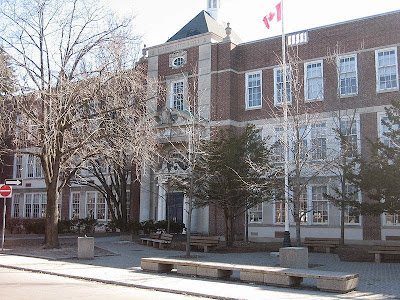


























 Human Highway
Human Highway

















 Concert Review of the Moment
Concert Review of the Moment





 This Land is My Land
This Land is My Land

 FREEDOM In A New Year
FREEDOM In A New Year








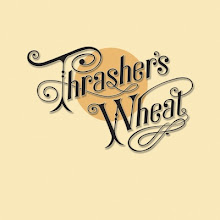
 *Thanks Neil!*
*Thanks Neil!*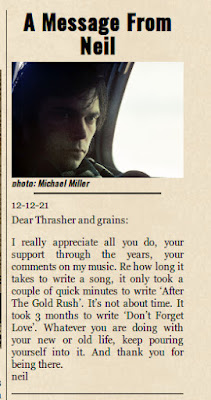




![[EFC Blue Ribbon - Free Speech Online]](http://www.thrasherswheat.org/gifs/free-speech.gif)











 The Unbearable Lightness of Being Neil Young
The Unbearable Lightness of Being Neil Young Pardon My Heart
Pardon My Heart



 "We're The Ones
"We're The Ones  Thanks for Supporting Thrasher's Wheat!
Thanks for Supporting Thrasher's Wheat!




 This blog
This blog 
 (... he didn't kill himself either...)
#AaronDidntKillHimself
(... he didn't kill himself either...)
#AaronDidntKillHimself

















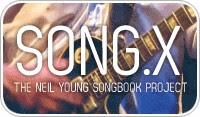





































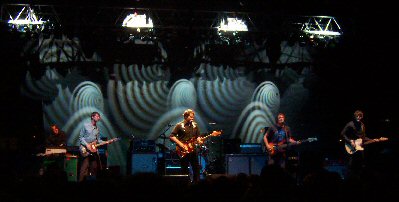

















 Neil Young's Moon Songs
Neil Young's Moon Songs




 Civic Duty Is Not Terrorism
Civic Duty Is Not Terrorism Orwell (and Grandpa) Was Right
Orwell (and Grandpa) Was Right


 What's So Funny About
What's So Funny About 



4 Comments:
Looking forward to getting my hands on a copy of this book. Looks a like good read for sure!
I've been meaning to post this for a while & this seems like a good time. Dear Thrasher, This is the best site on the web! I am so very grateful for everything you do here. Thank You
This comment has been removed by the author.
@blindtrail - we've had our preview copy for a month or 2 now (thanks Sharry!) and must say we learn something new almost every page or 3. You don't know Neil until you read an interview with his Kindergarten teacher. :)
@PL D - thanks! we try.
@MNOTR - yes, it really does seem to indicate quite a bit of forethought and care. Also, a great deal of fatherly confidence in the future of his son's career. A well played hand we must say.
Post a Comment
<< Home